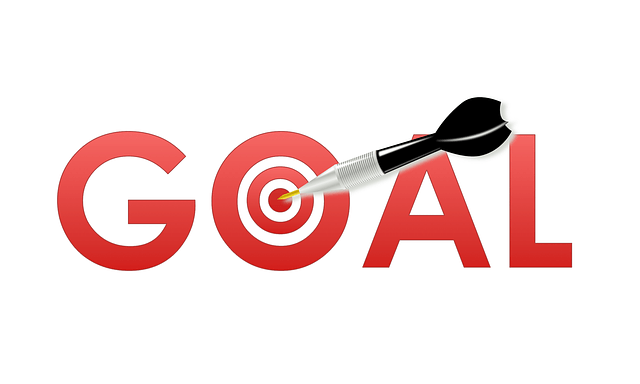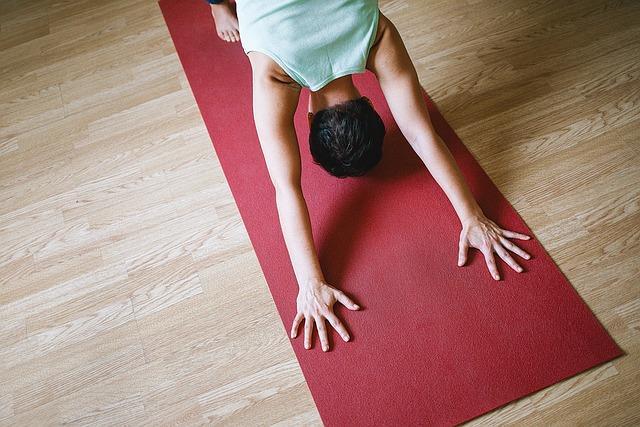Posts Tagged ‘acupuncture’
Are you Neglecting your Lower Back Muscles
Even the most conscious gym-goers can neglect important muscles
Case in point: the muscles of the lower back which are often neglected during people’s pursuit of the “mirror muscles-” abs, biceps and pecs that make you look attractive but leave you short on stability. Building a great body means building balance, and the muscles of the lower body are essential for stability and spinal health. What’s the point of looking great or having a lot of muscle if the most crucial structures of your body can’t bear the load that this extra muscle brings on? Here are three new sets of muscle to focus on during your next gym session:
- Extensors: posterior muscles which allow for lifting and standing. Among them is the erector spinae which allows the spine to stand straight.
- Flexors: attach to the front of the spine and allow for flexing, bending and lifting.
- Obliques: attach to the side of the spine and allow for rotation.
All these muscles work together to help you maintain proper posture, which is the first pitfall of not training them- it makes posture all the more difficult. From here, the problems compound, especially when you are asking your lower back to bear more strain as you scale up your ab routine.
Neglecting your lower back no longer
There are many exercises and stretches which can be easily learned and quickly added into your routine to ensure that you are rounding out your exercise and contributing to spinal health. After all, these are the muscles that matter most for the longevity of your body. Chronic pain, postural problems and degradation of the spine can all be prevented by paying attention to the conditioning of the lower back muscles. To resolve pain in the lower back, establish good posture and restore spinal balance, give our office in Park Slope a call to schedule an appointment today.
Dr. Karen Thomas, D.C.
Putting a Needle in Period Pain
Acupuncture is a powerful tool for women’s health
To demonstrate this point, let’s take a look at the efficacy of acupuncture when it comes to treating something common during the days leading up to and during a period: cramps. Scientifically known as dysmenorrhea, pain during menstruation does nothing more than add to the stress of your period. Pain is most often experienced in the lower abdomen, pelvis and lower back, and generally responds well to pain relieving medication. However, some women look for a more natural way to deal with menstrual cramps and acupuncture is a great way to do this.
How acupuncture works to treat menstrual pain
By freeing the body from stagnation, acupuncture encourages your blood to circulate smoothly, reducing pain from cramps and headaches. When combined with simple stretching that focuses on the abdomen, hip flexors and lower back, you can effect great improvements with pain relief without reaching into the medicine cabinet.
Your acupuncture specialist in Park Slope
Acupuncture can add another dimension of effective and natural support for many women’s health issues including:
- Menstrual pain
- Infertility
- Pregnancy and postpartum life
- Menopause
- Endometriosis
We are proud to be a resource for women’s care in the Park Slope area. If you are looking for an alternative from traditional western approaches to your particular issue, give our office a call to schedule an appointment today.
Dr. Karen Thomas, D.C., L.Ac.
Are you Leading a Pro-Inflammation Lifestyle?
Inflammation is an individual struggle
As we age, our bodies will face their fair share of degradation and, for many of us, this will include a modicum of painful inflammation; this is a reality of nature. What is not inherent in nature is the choices we are making as a society and on an individual level that actually encourage inflammation when it doesn’t need to be there. Obesity and diabetes are the current epidemics of our age and the kind of diets that contribute to those conditions are the ones that are sure to contribute to inflammation as well.
Take stock of your habits to see if you are living a pro-inflammation lifestyle
Below you will find factors that contribute to inflammation, but only those that are within your control; genetics, autoimmune diseases, virus and injury are not included.
- Smoking
- High-sugar foods: raise the presence of an inflammatory markers called cytokines
- Saturated fats: increase adipose (fat tissue) inflammation and can simultaneously affect chronic or acute inflammation
- Too much stress and too little sleep: raise your level of cortisol, a stress hormone which is linked to inflammation.
- A sedentary lifestyle: When your muscles move, they produce anti-inflammatory substances; if you’re not moving, this isn’t happening for you.
How we help reduce inflammation in Park Slope
Chiropractic targets inflammation at the source: when joints are misaligned, inflammation is never far behind. When a joint remains misaligned, and inflammation is allowed to subside, it can create pain in the affected area. Correcting misaligned joints and reducing inflammatory cytokines are two key ways that chiropractic helps reduce the presence of inflammation. Give our office a call to schedule an appointment and start turning around a pro-inflammatory lifestyle today!
Dr. Karen Thomas, D.C.
Balancing out the Junk!
Define: Junk Food
It’s the kind of food that gets your mouth watering at the very thought. We can all think of our favorite junk food, but what does the term really entail? From McDonald’s to freezer pizza to donuts, junk food is pre-prepared food that has little to no nutritional value. It is usually high in processed ingredients, sugar and bad fats. It is formulated to taste great and treat your brain’s reward complex, make you feel full and give you the baseline of nutrition to stay alive but not much more!
Junk food is not your friend
All that sugar:
- Spikes blood-sugar levels
- Inflames tissues
- Raises blood pressure
- Raises and drops insulin levels
The fat raises levels of undesirable cholesterol and your risk for type 2 diabetes while the sodium causes your body to retain water, making you feel bloated but also contributing to an enlarged heart muscle.
Balancing out the junk food diet
So you’ve gone on a junk food bender and you are looking to recover. Don’t feel bad- with our on-the-go lifestyle, the drive-thru or ready made meal is almost an essential from time to time. However, it is important to not make this your only source of fuel. Below we have come up with ways to balance a junk-food bender.
- Anti-inflammatory ingredients: junk food has a tendency to raise inflammatory markers in the blood, which makes it important to balance this by eating anti-inflammatory ingredients. Adding turmeric to your next stir fry is a great place tos tart.
- Water, water, water! to fight inflammation and nourish the cells of your body.
- High-fiber foods: to balance blood sugar and optimize the function of your gut.
- Healthy starches: rather than the good-for-nothing starches that characterize junk food.
Food is fuel so therefore food should be your friend!
At our office in Park Slope, we are aware of the difficulties inherent in a fast paced lifestyle; we are often at the mercy of the clock which leaves us little room for choice when its time to eat. If eating is a constant challenge, let us help you find the time to eat right and make healthy decisions across the board.
Dr. Karen Thomas, D.C.
Finding Success with Goal-Setting
Goal-setting helps you figure out where to start
Spring, the season of renewal, is right around the corner and there is no better time than spring to make powerful changes in your fitness routine. While it is more common to make fitness resolutions at New Years, we think it makes more sense to start when the weather is warming and the colors are getting brighter- there just seems to be more energy to tap into. For people looking to shed their winter skin and join in the movement of spring, it can help to focus on realistic goal-setting. Start by finding yourself on the fitness spectrum, with no shame: are you a no-fitness-fanatic, a dedicated gymrat, or something in-between. Before you set any goals, it is important to be honest with yourself and know just where you stand.
A checklist for success in goal-setting
- Choose an appropriate time frame
- Start with just one goal
- Write it down
- Schedule the time
Make goal-setting easier with our help at Community Chiropractic & Acupuncture
The feeling of fully achieving a goal can be a powerful incentive to continue with more ambitious goal-setting in the future. Let’s leave the winter in the rear view mirror and reap the benefits of the season to get our bodies feeling their healthiest. If you need help addressing long-standing limitations such as muscle pain or problems stemming from spinal conditions, we are your resource! At our office in Park Slope, we will help detect the true cause of your dsyfunction and create a plan for healing that will allow you to focus on successful goal-setting. Give our office a call to schedule an appointment today!
Dr. Karen Thomas, D.C.
Do you have a Forward Head?
Forward head posture is a modern conundrum
When interacting with a mobile device, chances are your posture is less than perfect. Unless you have the perfect ergonomic set up at all times of the day, you are likely to slip into a position where you are slumped forward or craning down over a cell phone. This behavior conditions the muscles of our neck into a forward head posture, away from its center of gravity, the spine.
Forward head posture is problematic because for each inch your head is held forward, another 10 pounds of pressure is added to the spine.
Now consider that many people we see are walking around with their heads forward 2-3 inches without even realizing and you begin to see how pervasive the problem is in our society. If you carry this kind of weight around, you are also carrying a greater likelihood for degenerative spinal conditions and painful muscle strain.
Adapting for our spine’s sake
Do you have forward head posture? Perform the wall test by standing straight up against a wall with heels shoulder-width apart and shoulder blades touching the wall. Does the back of your head touch the wall? Be honest. If not, this is a good indicator that you are carrying your head forward throughout the day. If this is the case, don’t freak out! It is a reversible problem; the sooner you start the better!
Approaching the Forward Head Problem
Because you have repetitively trained your neck muscles into holding your head forward, we need to train them differently. There is a likelihood that certain muscles such as the occipitals and sternocleidomastoid are overly-tight. We focus on releasing these muscles from tension and strengthening the muscles that matter for holding your head centered atop the spine. Behavior and awareness are equally important- if you notice your head creeping forward throughout the day, make a correction. Soon enough your head will naturally rest where it is supposed to be-atop your body!
Dr. Karen Thomas, D.C.
Posture Hacks
Posture is a constant challenge
Even if we know the basics of “perfect posture,” we still find ourselves slumped over at different points of the day. What we fail to realize is that we are fighting a losing battle. Of course the human body was never meant to sit for so many hours, so even if you could maintain perfect posture for 8 straight hours, your body would still be incurring some damage.
The trick is to change your position regularly throughout the day
But this is highly unrealistic for many workers, so instead we have come up with a list of tricks to keep posture on your side.
- #1 most important: pull your shoulders back and let them relax. The computer has a way of making us look like hunched over gremlins, and pulling your shoulders back defeats this position completely.
- Following this, check that your ears are aligned with your shoulders. This will stop your head from creeping forward and destabilizing the spine.
- Place a pillow or a jacket in the curvature of your lower back to help maintain a neutral posture.
What you will notice right away is that your body, even in this new position, begins to feel stiffer even more quickly than when you were slouching. It’s OK! This is your body adjusting to a normal position and the transition period is a small price to pay for the benefits of proper posture.
Most important of all, listen to your body.
If it feels stiff, stretch. If you notice your shoulders creeping, adjust. If your circulation feels stagnant, get up and have a quick walk. You get the idea! But will you act on it?
Dr. Karen Thomas, D.C.
Body Weight Training
What could be easier than body weight training?
There is no money to be spent, no gym membership or dumbbell set, no need to go anywhere; your only investements are the pounds you already possess and a bit of time out of your day. Chances are you already know the basics of each exercise (a push up for example) and with a bit of planning, you could turn these basic exercises into a full body workout.
Body weight training is efficient
Body weight training is efficient at helping maintain a healthy weight. When combined with light aerobic activity, (i.e. the jumping jack, or a lung jump followed by a jog back), body weight training is one of the most efficeint ways to burn calories.
Some other advantages of body weight training include:
-
Increasing relative strength
-
Boosting reactive strength
-
Encouraging better circulation
-
Strengthening the core to help with low back pain and posture
These sound exactly like the advantages to be gained from regular weight training! Body weight training works the best in circuits, whereby you move from exercise to exercise without a break and then repeat if possible. This burns calories quick, trains your heart to work at a higher level and boosts Post Exercise Oxygen Consumption, keeping your metabolism elevated for hours after the work out.
Body weight training is compatible with modern lifestyles.
Are you someone who thinks there is not enough time in the day for a full work out? Body weight circuits can be done in as little as 10 minutes in front of the television- now try telling me there isn’t enough time in the day. For help optimizing and indeed, modernizing your work out plan to fit into your hectic lifestyle, give our office in Park Slope a call to schedule an appointment today.
Dr. Karen Thomas, D.C., L.Ac.
Breathing Slower
As a society, we are actively attempting to unlearn proper breathing technique and it has enormous ramifications on quality of life. If you were only drawing 2/3 of the oxygen you could, and not expelling enough CO2 you would be severely disadvantaging yourself, yet this is what we are choosing to do in the face of air pollution, sit-heavy lifestyles, poor diets and lack of awareness regarding posture. In essence, many of us are only capturing the amount of oxygen needed to plod along, but not enough to prosper and feel great. At Community Chiropractic & Acupuncture, we believe in a more conscious way of life, and there is no better, quicker or easier way to practice this than to start breathing slower and deeper.
Taking a deep breath means:
- In through your nose
- Breathing into the lower belly, which should expand
- Holding for a few seconds
- Exhaling fully and slowly (think 4 seconds)
This helps immediately with anxiety or panic, but it can also be adapted as your primary breathing technique. While breathing only 10 times a minute may seem extreme, it is worth trying to reduce your number of breaths per minute, so that you can feel better. Capturing the full amount of oxygen means you will experience a noticeable increase in productivity and mood. We want to see everyone reap their true potential from the respiratory process, so that every cell can function with the full amount of inputs it needs to provide the body with energy to prosper.
Dr. Karen Thomas, D.C.
Acupuncture for Menopause
Acupuncture is a natural and sensible choice when it comes to responding to the symptoms of menopause: from the perspective of Traditional Chinese Medicine, a momentous natural process requires a natural response to keep hormones and symptoms in balance. Symptoms of menopause that have been shown to respond well to acupuncture include hot flashes, irritability, and improving quality and quantity of sleep.
Rather than treating menopause as one specific syndome, Traditional Chinese Medicine treats its many symptoms with a multi-dimensional response. We seek out acupuncture points that correspond directly to the physical and emotional side-effects of menopause. Furthermore, by encouraging endorphin release, acupuncture helps treat chronic pain and several studies show that acupuncture is linked to an increase in nighttime melatonin production and a boost in total sleep time. While the treatment does involve the insertion of very thin needles into the skin, the effect we produce is one of intense relaxation that overrides the brief moment of discomfort during insertion.
Menopause is unique to every woman, not only because it can occur at any age, but also because the degree of symptoms varies and thus an individual treatment plan is absolutely necessary. At Community Chiropractic & Acupuncture, we begin with a conversation regarding your medical and lifestyle history to create an individually tailored plan that accounts for your emotions and needs. Through acupuncture and chiropractic treatment, we hope to promote a culture of relaxation in your life during a time of intense emotional upheaval.
Dr. Karen Thomas, D.C., L.Ac.










